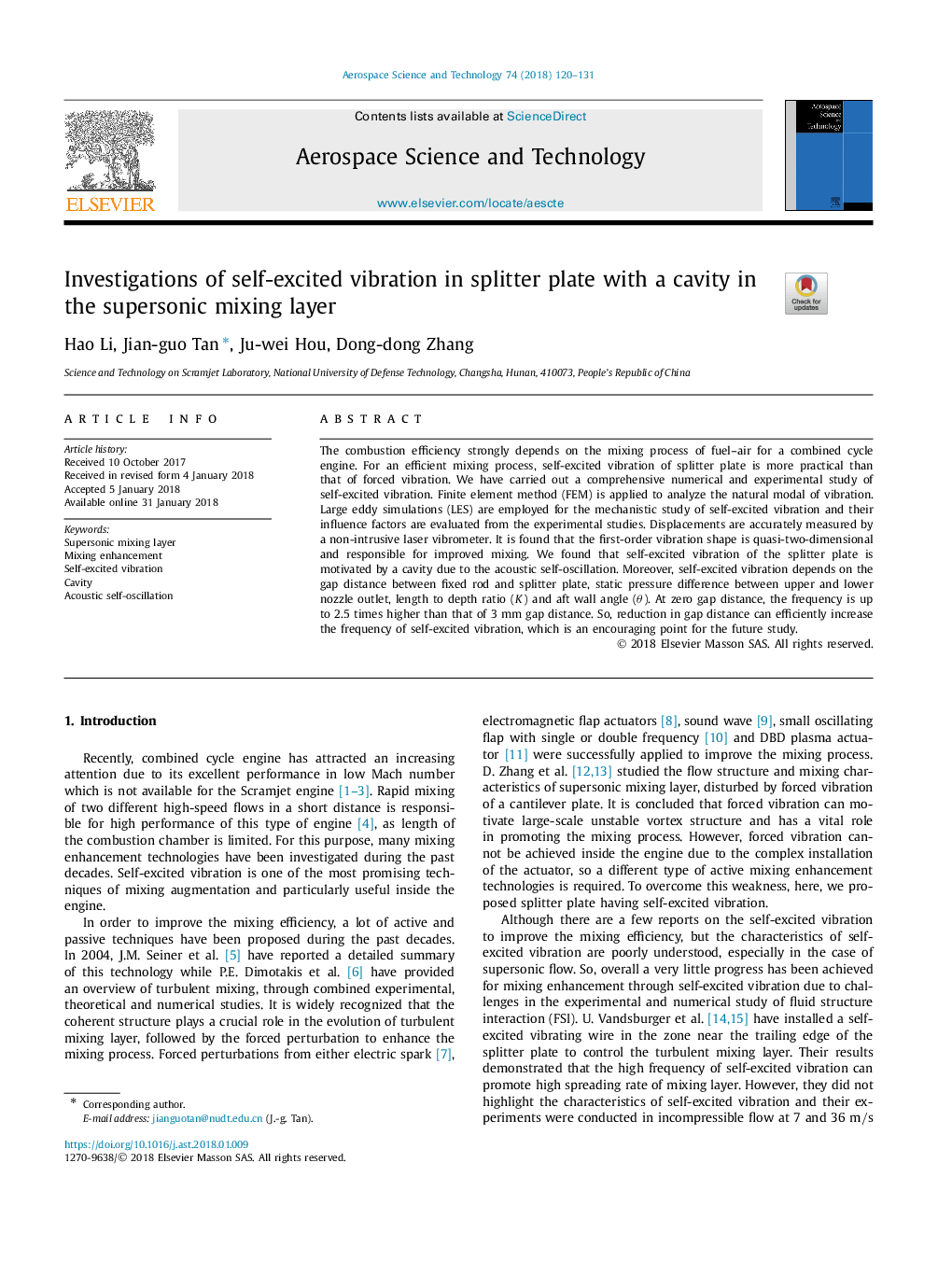| Article ID | Journal | Published Year | Pages | File Type |
|---|---|---|---|---|
| 8058052 | Aerospace Science and Technology | 2018 | 12 Pages |
Abstract
The combustion efficiency strongly depends on the mixing process of fuel-air for a combined cycle engine. For an efficient mixing process, self-excited vibration of splitter plate is more practical than that of forced vibration. We have carried out a comprehensive numerical and experimental study of self-excited vibration. Finite element method (FEM) is applied to analyze the natural modal of vibration. Large eddy simulations (LES) are employed for the mechanistic study of self-excited vibration and their influence factors are evaluated from the experimental studies. Displacements are accurately measured by a non-intrusive laser vibrometer. It is found that the first-order vibration shape is quasi-two-dimensional and responsible for improved mixing. We found that self-excited vibration of the splitter plate is motivated by a cavity due to the acoustic self-oscillation. Moreover, self-excited vibration depends on the gap distance between fixed rod and splitter plate, static pressure difference between upper and lower nozzle outlet, length to depth ratio (K) and aft wall angle (θ). At zero gap distance, the frequency is up to 2.5 times higher than that of 3 mm gap distance. So, reduction in gap distance can efficiently increase the frequency of self-excited vibration, which is an encouraging point for the future study.
Related Topics
Physical Sciences and Engineering
Engineering
Aerospace Engineering
Authors
Hao Li, Jian-guo Tan, Ju-wei Hou, Dong-dong Zhang,
